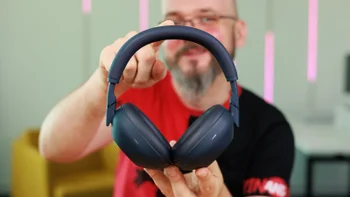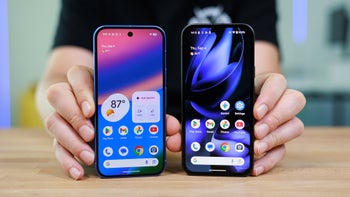Cell phone radiation: Counteraction

"Radio is the transmission of signals through free space by modulation of electromagnetic waves with frequencies significantly below those of visible light. Electromagnetic radiation travels by means of oscillating electromagnetic fields that pass through the air and the vacuum of space."
Just in case the definition above doesn't mean much to you, here's our, easier to understand take on cell phone radiation: As you know, our phones maintain a constant connection with carriers' networks. This is done because we want to be able to make calls, or to be called, at any time of the day (or night). For this communication to happen, however, our phones have to transmit and receive a special signal, which carries the information that's to be communicated between the phone and the carrier's network. This process of transmitting and receiving the said signal happens through radio waves, or radiation. However, it so happens that radio waves have both an electric and magnetic fields, and there you have it - electromagnetic radiation!
For many years, scientists have believed that the type of radiation emitted by cell phones and towers is harmless to health, because it is non-ionizing. Ionizing radiation, such as the one emitted by x-rays and nuclear energy, is the dangerous one. So what has changed that we now have never-ending disputes as to whether or not cell phones cause cancer? Quite simply, cell phones have become so popular and ever-present that if there's even the slightest chance for them to be harmful, we better do some very serious research before we can decide that's it's completely safe to sleep with a phone right next to your head.
Unfortunately, as you may know, a final conclusion is yet to be reached. After numerous researches, some of which continuing for as long as 20 years, there is still no evidence that there's a direct link between electromagnetic radiation emitted by cell phones and cancer. However, even such large studies are considered inconclusive by some institutions. What's more, it is said that the effects of prolonged electromagnetic exposure can be observed at a much later period. In other words, we may or may not be doomed, it remains to be seen.
In general, one of the more serious effects that microwave electromagnetic radiation (such as the one emitted by cell phones) can have on us is the thermal effect. This type of radiation is generating a thing called dielectric heating (or RF heating), which is capable of penetrating living tissue. Why is this kind of heating bad? Because your body cannot cool down some of the parts that are typically exposed to phone radiation. Normally, when there are some overheated cells in your body, your brain simply orders more blood to go their way, which eventually disposes of the excess heat. However, as we said, there are some areas in your body that do not have such temperature regulation – like the cornea of the eye or the male testes. Because of that, it's markedly dangerous to expose those areas to significant heat. Now, just how biologically significant the RF heat that's coming from your phone is, is... you guessed it – not clear.
But just because there's no direct evidence linking cell phones with cancer found yet doesn't mean that we shouldn't take any precautions. Thankfully, governmental regulation agencies around the world have already set up specific standards with regards to the maximum power output a cell phone can have.
As it became clear, a part of the radiation that's coming from our phones is inevitably absorbed by none other but us. This is where the popular SAR, or Specific Absorption Rate, comes into play. What SAR measures is the rate at which radiation is absorbed by the human body, when the latter is exposed to radio frequency electromagnetic fields. SAR is defined as the power that is absorbed per mass of tissue and is measured in watts per kilogram. In the U.S., the FCC has set a SAR limit of 1.6 W/kg, averaged over a volume of 1 gram of tissue, for the head. In Europe, the regulatory organs have set a SAR limit of 2 W/kg, but averaged over a volume of 10 grams of tissue. Because of this, when you're comparing SAR values, you should only compare American ratings with American ratings, and European ratings with European ratings.
In short, the lower the SAR rating of your phone is, the better. But, a lower rating would not necessarily mean that this particular model will be healthier for you. As a whole, it is great to have those SAR limits and to know that phone manufacturers aren't allowed to do whatever they want. However, it's still early to say if these precautions have been strict enough to ensue that our wireless devices do not hold any health risks.
All of this is what makes us believe that there's no reason to panic. At the same time, it also means that it'd be best if we start employing a number of tricks that can potentially lower the risk of any possible health hazards greatly. Dear readers, it's time to counteract cell phone radiation!
So, guys and gals, what's your take on this issue? Do you fear cell phone radiation? Do you already employ some of the tips shown above? C'mon, don't be shy - share your opinion!
Explaining cell phone radiation
Just in case the definition above doesn't mean much to you, here's our, easier to understand take on cell phone radiation: As you know, our phones maintain a constant connection with carriers' networks. This is done because we want to be able to make calls, or to be called, at any time of the day (or night). For this communication to happen, however, our phones have to transmit and receive a special signal, which carries the information that's to be communicated between the phone and the carrier's network. This process of transmitting and receiving the said signal happens through radio waves, or radiation. However, it so happens that radio waves have both an electric and magnetic fields, and there you have it - electromagnetic radiation!
What was that SAR thing again?
But just because there's no direct evidence linking cell phones with cancer found yet doesn't mean that we shouldn't take any precautions. Thankfully, governmental regulation agencies around the world have already set up specific standards with regards to the maximum power output a cell phone can have.
As it became clear, a part of the radiation that's coming from our phones is inevitably absorbed by none other but us. This is where the popular SAR, or Specific Absorption Rate, comes into play. What SAR measures is the rate at which radiation is absorbed by the human body, when the latter is exposed to radio frequency electromagnetic fields. SAR is defined as the power that is absorbed per mass of tissue and is measured in watts per kilogram. In the U.S., the FCC has set a SAR limit of 1.6 W/kg, averaged over a volume of 1 gram of tissue, for the head. In Europe, the regulatory organs have set a SAR limit of 2 W/kg, but averaged over a volume of 10 grams of tissue. Because of this, when you're comparing SAR values, you should only compare American ratings with American ratings, and European ratings with European ratings.
All of this is what makes us believe that there's no reason to panic. At the same time, it also means that it'd be best if we start employing a number of tricks that can potentially lower the risk of any possible health hazards greatly. Dear readers, it's time to counteract cell phone radiation!
Counteraction
Let's see what the experts are recommending. Simply switch between the pics for the different tips...
So, guys and gals, what's your take on this issue? Do you fear cell phone radiation? Do you already employ some of the tips shown above? C'mon, don't be shy - share your opinion!
Follow us on Google News














Things that are NOT allowed:
To help keep our community safe and free from spam, we apply temporary limits to newly created accounts: